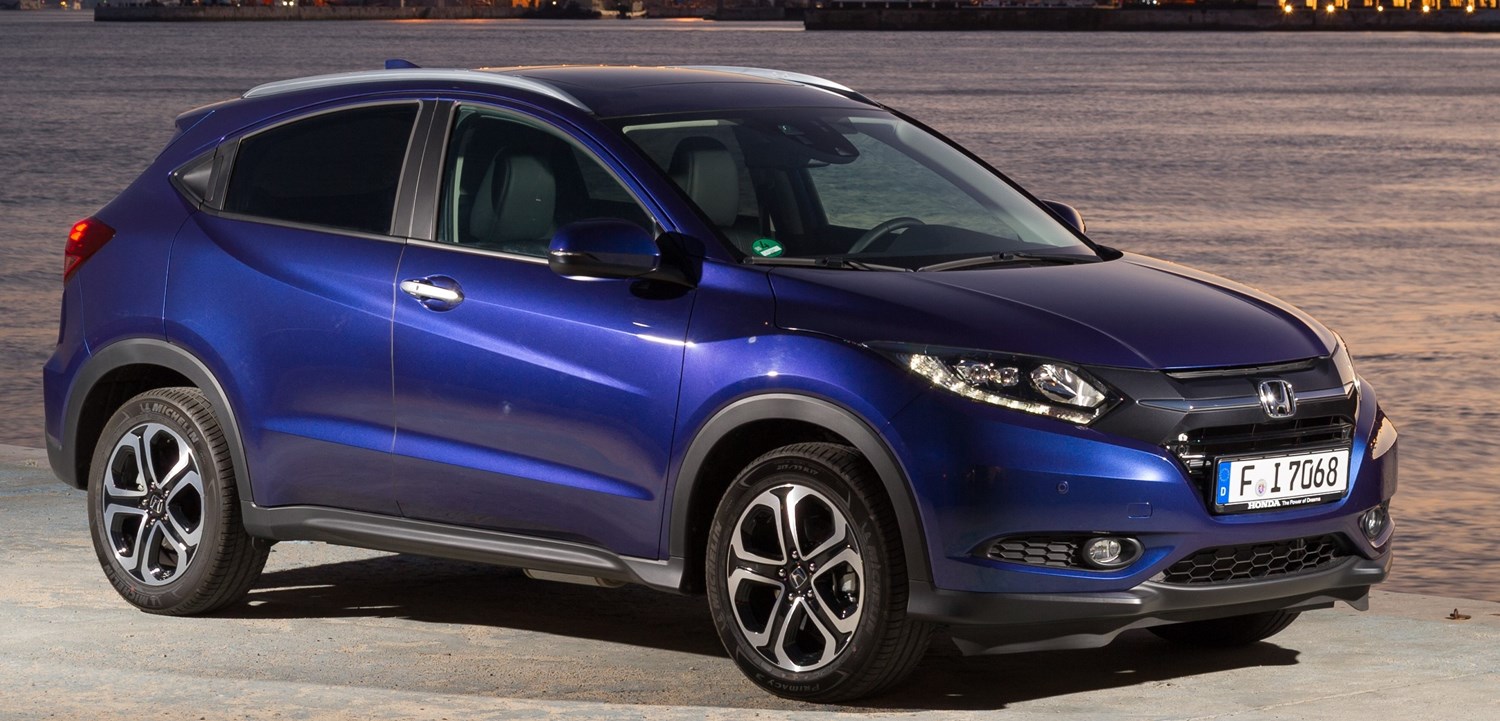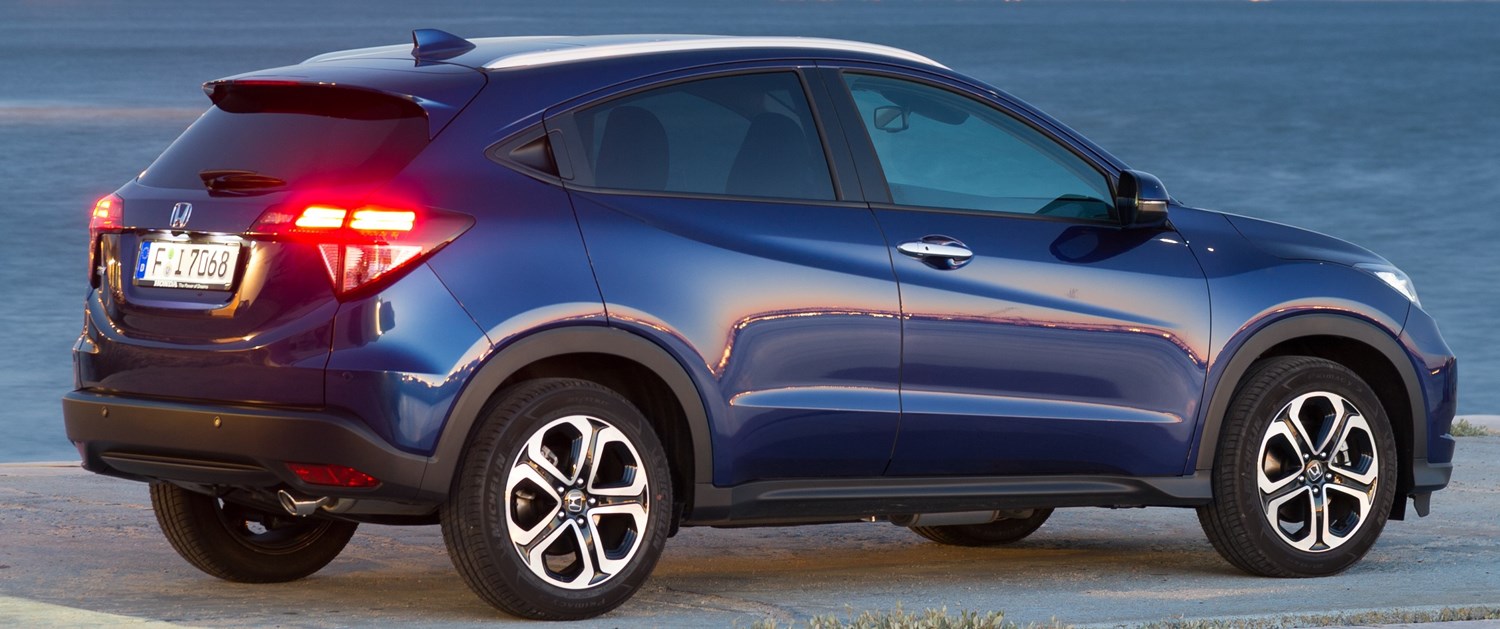Review
The HR-V came to market in 1999 to combine the practicality and visibility of an SUV with the economy and urban manoeuvrability of a supermini. Based on the Honda Jazz of the era, the car was offered with front- and four-wheel drive, and was powered by a 1.6-litre petrol engine.
After six years of production, the HR-V was canned in 2005, but it returned from its ten-year sabbatical in 2015. Again based on supermini underpinnings, the chunky-looking car brought with it the latest safety kit, oodles of cabin space and more efficient engines.
The old naturally aspirated petrol engine was eschewed in favour of a 1.5-litre turbocharged unit, while the acclaimed 1.6-litre turbodiesel engine from the Civic was added to the line-up. Four-wheel-drive was also sacrificed.
With a modified Jazz chassis under the bodywork, though the car brings with it impressive driving dynamics, offering responsive handling and a reasonable ride quality. The damping drew criticism from some quarters, but the new HR-V is generally considered to be a solid contender in the crossover market.

Latest models
Coming to market in the latter part of 2015, the HR-V is one of the first cars to showcase Honda’s new, chunkier design language, which has now been fitted to the next-generation Civic.
At the front, the muscular grille gives an impression of power and capability, while further back, the glasshouse has been designed to look more like a coupe than an SUV. The result is a rakish rear screen and a low-cut roofline, all of which sits atop a chunky lower half with lots of strong styling cues.
Inside, the cabin follows a similar pattern, combining boxy angles with the delicacy of a smaller car. The whole interior, though, is dominated by a touchscreen infotainment system. It isn’t the prettiest unit in the world, and the satellite navigation system is a bit basic, but for the most part it’s functional and logical, and they’re the most important facets.
Value for money
New HR-V start at £18,695, which is substantially more than rivals such as the Skoda Yeti, but it isn’t quite that simple.
The HR-V is well equipped, with even basic cars serving up automatic climate control, alloy wheels and automatic dusk-sensing headlights that turn themselves on when it gets dark.
Further up the range, SE Navi and EX models offer satellite navigation, parking sensors and other goodies, while the top-of-the-range EX provides leather seats, a panoramic roof and a reversing camera.
Used first-generation cars offer exceptional value, with serviceable cars costing less than £1,000 and offering a reliability record that promises many more years of faithful service.
Looks and image
The original HR-V had a revolutionary stance, with an upright silhouette, a boxy rear and a smooth and comparatively aerodynamic front end. It was one of the first crossovers, before the market really took off.
The second-generation car is even more of a focused crossover, and although it actually has less off-road capability than its forebear thanks to a lack of four-wheel drive, it looks stronger and more rugged.
At the front, a strong horizontal bar in the grille gives the car a bullish look, while the angular bumpers add to the macho image. Further back, the bodywork is creased and folded with powerful lines stretching down the side of the car, while the low roof and steeply angled rear window have been designed to offer a sporty look.
All in all, it’s not only a more modern design than its predecessor boasted, but it’s also more modern than many of its rivals, and it’s sure to stand out, even in a world where quirky SUVs are the norm.

Space and practicality
Although the HR-V is a relatively small SUV, it’s practical enough to mix it with cars a segment higher. The 448-litre boot is larger than you’ll find in the back of the larger Nissan Qashqai, and space in the rear seats is decent, too, provided you don’t go for the headroom-limiting panoramic glass roof.
The older first-generation car is less capacious, and three-door versions don’t make it especially easy to get into and out of the rear seats, but it’s still roomier than most small hatchbacks and it offers far more all-round capability.
Engines
The first-generation HR-V came with a very limited range of engines. In fact, there was just one – a 1.6-litre four-cylinder petrol engine – with Honda’s famous VTEC valve timing technology.
Now, though, customers are faced with the choice of two power units. Those wanting petrol power can opt for the 1.5-litre i-VTEC, while those seeking the economy of diesel will be catered for by the 1.6-litre i-DTEC engine.
Choosing the best engine will largely come down to your driving habits. Those doing relatively low mileages or driving almost exclusively in built-up areas will benefit from the petrol engine’s refinement, while those doing a lot of motorway miles will prefer the mid-range punch and impressive efficiency offered by the diesel.
There is also a choice of two gearboxes, although only the six-speed manual is available with the diesel engine. It’s a good gearbox, with a slick shift action and a sporty short throw. Those choosing petrol power, however, can opt for a CVT automatic transmission. On paper, it’s more efficient than the manual, but the lack of refinement and the need to push hard to elicit any sort of performance will likely nullify this advantage.
Running costs
Honda is one of the world’s most reliable car brands, so running an HR-V shouldn’t be ruinous in terms of maintenance costs. Main dealer servicing isn’t especially cheap, but it isn’t particularly expensive either.
Fuel and insurance costs should also be fairly palatable, with engines that aren’t too potent and plenty of on-board safety kit in second-generation cars. The diesel unit is especially frugal, returning more than 70mpg on the combined cycle. Road tax shouldn’t be too bad, either, with CO2 emissions of 104g/km.
Things to look out for
Honda’s reputation for reliability is legendary, and the HR-V is no exception to the rule. As long as the car has a solid service history and hasn’t been bashed about by too much off-roading, it ought to be a hassle-free purchase.
Of course, though, all the usual rules apply when buying a used car. Make sure the vehicle hasn’t been written off or been in an accident, and check that there’s no outstanding finance.
New cars will still be in warranty, provided the mileage limit hasn’t been exceeded, and you can buy them with reasonable confidence, but it might be worth getting a first-generation car checked out by an expert before parting with your hard-earned cash.
Rivals
When the first HR-V was launched, it was more or less devoid of rivals, but by the time the new version was ready, the market was pretty much saturated.
Key opponents include the Skoda Yeti, which offers practicality, value and surprisingly good road manners, and the Fiat 500X, which combines the style of the normal Fiat 500 city car with the practicality of a genuinely useful SUV. It’s also one of the few 500-derived models to offer an almost universally appreciated design.
Other competition comes in the shape of the Toyota C-HR, which has a left-field design and also boasts impressive driving dynamics, albeit let down by its hybrid powertrain. The 500X’s sister car, the Jeep Renegade is another rival, but its off-road credentials mean it generally appeals to a slightly different market.
Depreciation warning
HR-Vs are currently holding their value relatively well, with 2015 cars selling on forecourts for around £15,000. For a two-year-old car that cost around £20,000 when new, that’s a fairly strong residual value. You can pick up a few bargains, though, with most cars having low mileages and all second-generation HR-Vs still well within their warranty period.
First-generation cars, however, are currently selling for as little as £500, with even eminently serviceable examples coming in at less than £1,000. Nice ones, however, will cost in the region of £1,500, and should offer many more years of trouble-free motoring.
With such a quirky look and a cult following, though, the first-generation HR-V stands half a chance of becoming a modern classic, which could mean prices will rise slightly in a few years’ time.




